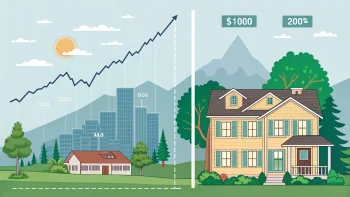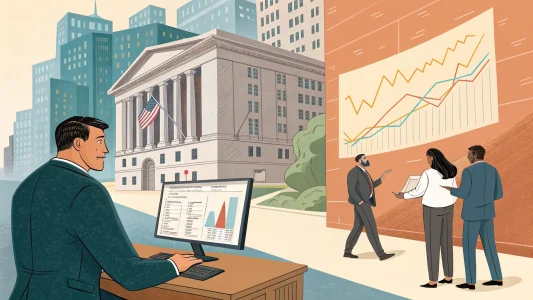The question of whether stocks are due for a pullback has been a hot topic among investors recently. This isn’t about spreading fear or panic but instead about presenting facts and data to help investors make informed decisions. To delve into this question, we’ll use both technical and fundamental data to support the argument.
View this post on Instagram
A post shared by Taylor Sohns – CFP®, CIMA®, MBA – Finance (@lifegoalinvestments)
Table of Contents
ToggleTechnical analysis: The role of the Relative Strength Index (RSI)
The Relative Strength Index, or RSI, is a momentum oscillator that measures the speed and change of price movements. It’s a tool primarily used to identify overbought or oversold conditions in a market. The RSI ranges from 0 to 100, with readings below 30 indicating oversold conditions and readings above 70 indicating overbought conditions.
When the RSI dips below 30, it suggests that the selling has been overdone, and a price rebound could be near. On the flip side, when the RSI climbs above 70, it suggests that the buying has been overdone, and a price pullback could be imminent.
Currently, the RSI for the S&P 500 sits at a hefty 77, significantly above the overbought threshold of 70. Over the past five years, there have only been five instances where the RSI breached 77. Each instance resulted in a pullback of 20%, 8%, 26%, 11%, and one instance where the market did not pull back. This data suggests that, based on the RSI, stocks are indeed due for a pullback.
Fundamental analysis: The Price-to-Earnings Ratio (P/E)
The Price to Earnings (P/E) ratio is a valuation ratio of a company’s current share price compared to its per-share earnings. It provides a measure of the price paid for a share relative to the annual net income or profit earned by the firm per share. A high P/E ratio could mean that a company’s stock is over-valued or else that investors are expecting high growth rates in the future.
The historical P/E ratio of the S&P 500 provides insight into whether the market is overvalued or undervalued. When the P/E ratio is low, stocks are inexpensive, and when it is high, the market is excited about stocks, making them expensive.
Currently, the S&P 500 P/E ratio is high, indicating that stocks are expensive. Historical data shows that the average annual return for the S&P 500 over the next five years is low when stocks are expensive. This suggests that the S&P 500 will not likely provide significant returns over the next five years if history is any indicator.
Conclusion: What does this mean for investors?
While history does not always repeat itself, the technical and fundamental data suggest that stocks are due for a pullback. However, this doesn’t mean that the pessimistic data will necessarily play out as suggested. When making investment decisions, investors must consider these factors, along with their individual investment goals and risk tolerance. As always, consulting with a financial advisor or conducting further research is recommended before making any investment decisions. Knowledge is power, and informed decisions are the key to successful investing.
Frequently Asked Questions
Q. What is the Relative Strength Index (RSI), and how does it indicate a potential stock pullback?
The Relative Strength Index, or RSI, is a momentum oscillator that measures the speed and change of price movements. It’s primarily used to identify overbought or oversold conditions in a market. The RSI ranges from 0 to 100, with readings below 30 indicating oversold conditions and readings above 70 indicating overbought conditions. When the RSI climbs above 70, it suggests that the buying has been overdone, and a price pullback could be imminent. Currently, the RSI for the S&P 500 is significantly above the overbought threshold of 70, suggesting that stocks are due for a pullback.
Q. What is the Price-to-Earnings Ratio (P/E), and how does it indicate a potential stock pullback?
The Price-to-earnings (P/E) ratio is a valuation ratio of a company’s current share price compared to its per-share earnings. It measures the price paid for a share relative to the annual net income or profit the firm earns per share. A high P/E ratio could mean that a company’s stock is over-valued or else that investors are expecting high growth rates in the future. The S&P 500 P/E ratio is high, indicating that stocks are expensive. Historical data shows that the average annual return for the S&P 500 over the next five years is low when stocks are expensive. This suggests that the S&P 500 will not likely provide significant returns over the next five years if history is any indicator.
Q. What should investors do in light of the current market conditions?
While the technical and fundamental data suggest that stocks are due for a pullback, this doesn’t mean that the pessimistic data will necessarily play out as suggested. When making investment decisions, investors must consider these factors, along with their individual investment goals and risk tolerance. As always, consulting with a financial advisor or conducting further research is recommended before making any investment decisions. Remember — knowledge is power, and informed decisions are the key to successful investing.

















